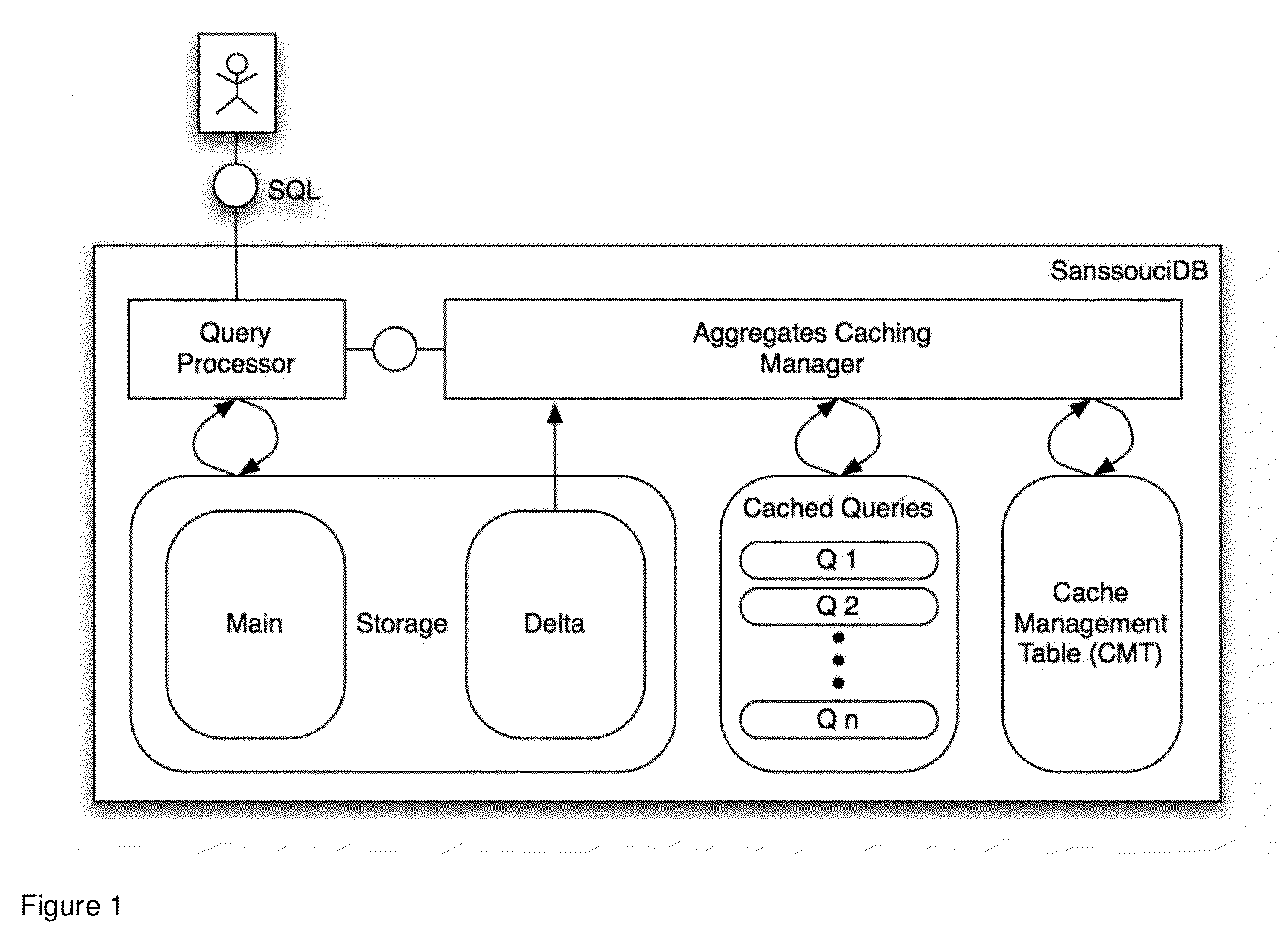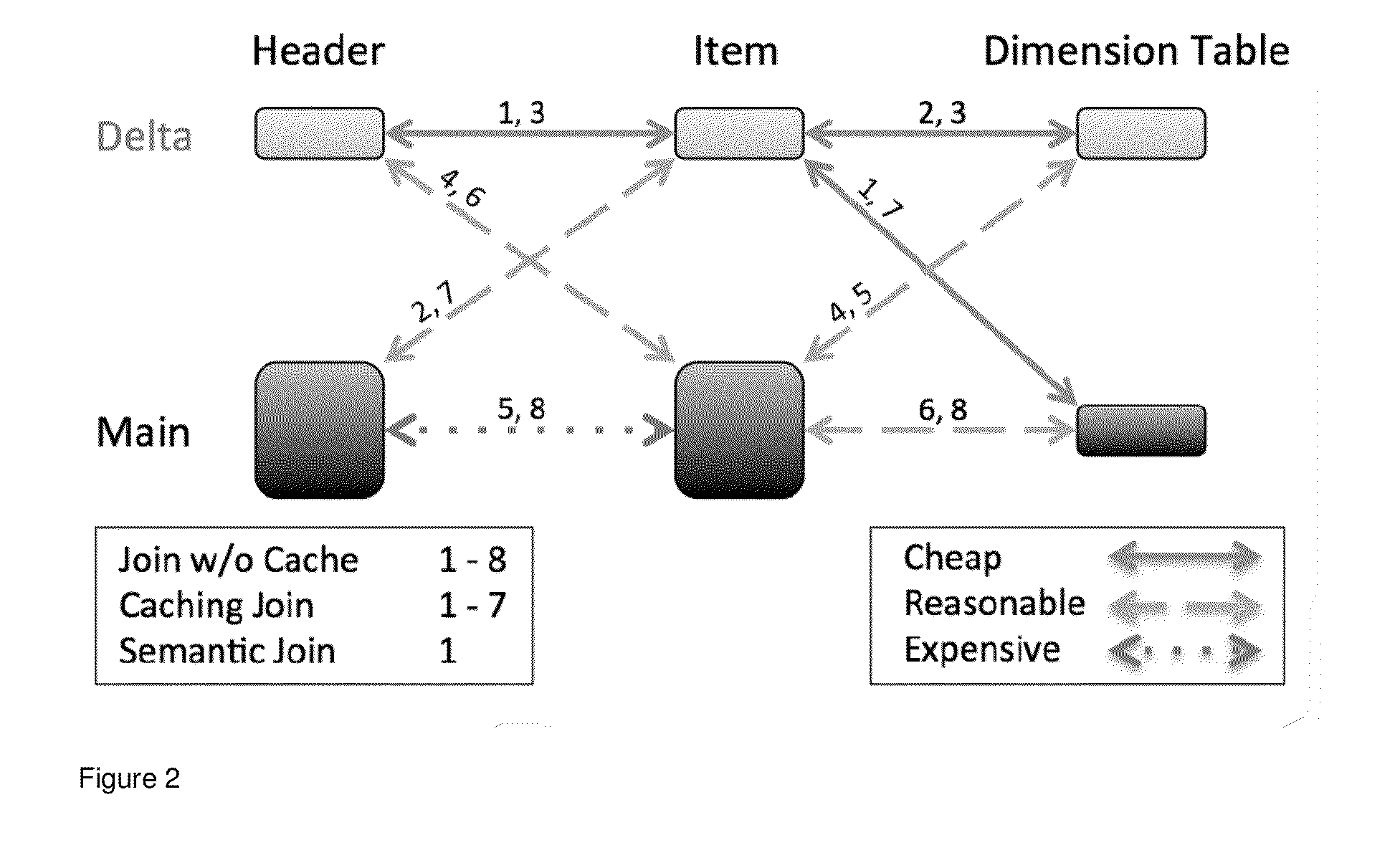Using object awareness for a join pruning mechanism
a join processing and object awareness technology, applied in the field of databases, can solve the problems of complex and costly extract-transform-load-(etl)-processes, non-up-to-date and redundant data, and often limited flexibility of analytical applications, so as to avoid unnecessary access to potentially large partitions and optimize the join processing
- Summary
- Abstract
- Description
- Claims
- Application Information
AI Technical Summary
Benefits of technology
Problems solved by technology
Method used
Image
Examples
example 1
[0115] Let {R1; R2} be a partitioning of R(A) defined as R1=σR[A]>10(R) and R2=σ(R[A]10) IS NOT TRUE(R). Let {S1; S2} be a partitioning of S(A) defined as S1=σS[A]<5(T) and S2=σ(S[A]<5) IS NOT TRUE(S). Then, the pair (R1; S1) is pruned by the join operator R[A]=S[A]. Proof R1 R[A]=S[A]S1=R1 R[A]=S[A]̂R[A]<10 ̂S[A]<5 S1=Ø because the predicate R[A]=S[A]R[A]>10 [A]1; R2} and S partitioned as {S1; S2}.
[0116]Example 2. Let {R1; R2} be a horizontal partitioning of R(A). Let {S1; S2} be a horizontal partitioning of S(A). Then, the pair (R1; S2) is pruned by the join operator R[A]=S[A] if it can be determined that the instances Si and Ri are such that Ri1 R[A]=S[A]Si2=;. One runtime criteria for determining that the pair (Ri1; Si2) is pruned by R[A]=S[A] could be based on the current range values of the attribute A in the tables R and T. Note that the tuples with NULL value on A will not participate in the join.
Equation (4):Let max(R1i[A]) = max{t[A]|t ∈ R1i},min(R1i[A]) = m...
PUM
 Login to View More
Login to View More Abstract
Description
Claims
Application Information
 Login to View More
Login to View More - R&D
- Intellectual Property
- Life Sciences
- Materials
- Tech Scout
- Unparalleled Data Quality
- Higher Quality Content
- 60% Fewer Hallucinations
Browse by: Latest US Patents, China's latest patents, Technical Efficacy Thesaurus, Application Domain, Technology Topic, Popular Technical Reports.
© 2025 PatSnap. All rights reserved.Legal|Privacy policy|Modern Slavery Act Transparency Statement|Sitemap|About US| Contact US: help@patsnap.com



